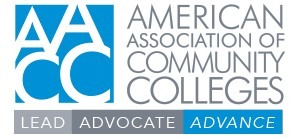Since 2016, community colleges have played an increasingly pivotal role in the nationwide expansion of registered apprenticeships. These institutions have embraced the U.S. Department of Labor’s initiatives to grow apprenticeship programs across a wide range of occupations and industries. For this expansion to continue effectively, AACC encourages community college executives to craft a compelling case for their support, emphasizing the benefits to state political leaders and stakeholders.
Advocating for Apprenticeships at Multiple Levels
Community college leaders must be well-versed in their state’s apprenticeship policies and funding opportunities. States vary significantly in their subsidies and federal support for apprenticeship programs, and knowing whether the state operates as a State Apprenticeship Agency (SAA) or under the federal Office of Apprenticeship (OA) framework is critical. SAA states have unique policies and funding structures, while OA states follow federal guidelines. Understanding these distinctions allows executives to advocate effectively at local, state, and federal levels for increased support and resources.
The Importance of Data-Driven Advocacy
State and federal political leaders are particularly receptive to data-driven arguments. Executives should leverage key data to highlight the benefits of apprenticeship programs, such as:
- Labor Market Information (LMI): Employment projections, wage and salary trends, and demand for skilled workers in targeted sectors.
- Sector Growth Strategies: Data demonstrating industry growth and the need for expanded workforce pipelines.
- Economic Impact: Statistics that showcase how apprenticeships strengthen local economies, reduce unemployment, and support community development.
- By presenting clear, evidence-based insights, executives can build a strong case for sustained and expanded apprenticeship funding.
Braided Funding as a Strategy for Growth
An essential discussion point with political leaders is the use of braided funding to support apprenticeship expansion. Braided funding involves combining multiple funding sources to maximize program impact. For example, states can allocate budget funds, offer tax credits to employers, or tap into federal workforce development grants to bolster apprenticeship initiatives. ; Several states have already established innovative funding mechanisms, such as dedicated apprenticeship grants or tax incentives, to support program growth.
Resources to Support Advocacy and Expansion
AACC encourages community college leaders to utilize available resources to strengthen apprenticeship programs and their advocacy efforts. A sample of resources are listed below.
Successful Stories and Promising Practices
Other Resources
- opens in a new windowState Incentives to Promote and Support Apprenticeshipopens PDF file
- opens in a new windowTraining Tomorrow’s Workforce Community College and Apprenticeship as Collaborative Routes to Rewarding Careers (Urban Institute)
- opens in a new windowThe Federal Resources Playbook for Registered Apprenticeshipsopens PDF file
- opens in a new windowApprenticeship Carolina
- opens in a new windowAn Effectiveness Assessment and Cost-Benefit Analysis of Registered Apprenticeships in 10 Statesopens PDF file
- Task Force on Apprenticeship Expansion Final Report to the President of the United Statesopens PDF file
